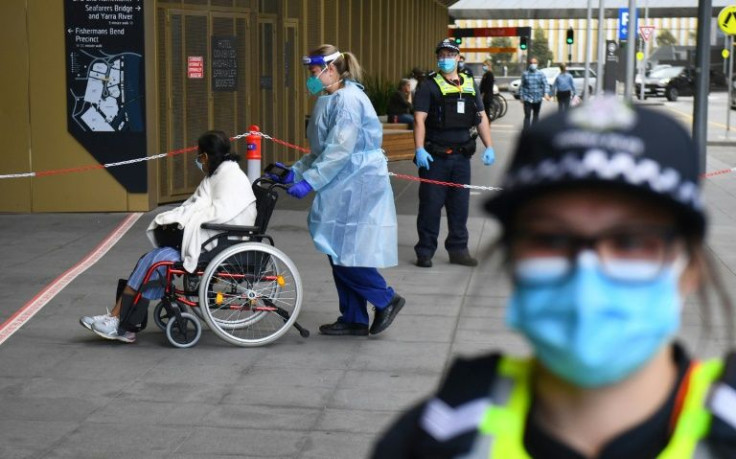Australia Lost AU$9.6 Billion In 2022 Due To Long COVID's Impact On Workforce: Study

Australia's economy reportedly suffered a loss of AU$9.6 billion in 2022 from lost working hours, as up to 1.3 million people were affected by long COVID, a new study has revealed.
The research led by the University of Melbourne, the Australian National University (ANU) and UNSW Sydney calculated the number of lost labor hours of Australian adults, who were unable to work, or were forced to work reduced hours, in 2022 because they were affected by COVID-19 symptoms for 12 months after the initial diagnosis.
Between 310,000 and 1.3 million Australians were living with long covid during the peak of the pandemic in September 2022; 55,000 of them were children aged below four. By December 2024, between 173,000 and 873,000 Australians were estimated to be living with long COVID, which excluded reinfections.
The World Health Organization defines long COVID as the continuation or development of new symptoms three months after the initial COVID infection, where these symptoms last for at least two months, according to ABC News.
SARS-CoV-2 (the virus that causes COVID) is present in the body for 12 months after the initial infection, leading to dysfunction of the immune system.
The research studied 5,185 Australian working adults, who were infected with COVID-19, from January 2022 to December 2023. This data was used to develop a mathematical model to calculate persons who experienced covid symptoms from three to 12 months, and those who suffered for more than 12 months.
"Workers experiencing ongoing COVID-19 symptoms months after their initial diagnosis resulted in, on average, about 100 million lost labor hours in 2022. This is equivalent to an average loss of eight hours per employed person, per year, including both full-time and part-time employment," ANU Professor Quentin Grafton said. "We estimate this equates to economy-wide losses, on average, of about $9.6 billion in 2022, or one-quarter of Australia's real gross domestic product growth that year. This does not account for losses such as healthy employees who can't work because they're caring for others with long COVID."
According to University of Melbourne Professor Tom Kompas, people between the ages of 30 and 49 contributed the most to the loss.
"Workers in that age bracket contributed to a loss of 52 million worked hours, or more than 50% of the total labor and productivity lost in 2022," Professor Kompas said.
Based on the data, researchers said the focus was more on prevention of hospitalization and death. They demanded the policymakers make long COVID a public health priority.
Heart disease, which affects nearly 3% of Australians, is a leading contributor in causing death. Long COVID could surpass this number, becoming a major factor in causing illness, researchers pointed out.
"It's time we considered long COVID in policy decisions, which currently makes it difficult for younger, healthy people to access boosters or antivirals. Widening access will have a better impact on long COVID, as the greatest burden is on working-age adults," senior author Professor Raina MacIntyre from UNSW said.
"We need an enhanced health system capacity to treat long COVID and for social structures to support sufferers and manage their illness. This would improve the quality of life and possibly also the rate at which individuals can return to the workforce," Kompas said.
© Copyright 2025 IBTimes AU. All rights reserved.





















